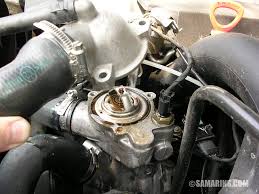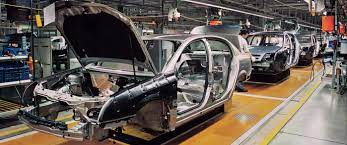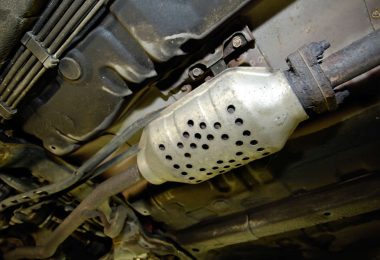How does a car thermostat works? The car thermostat is an important part of the cooling system, which keeps the engine running at optimal temperature. It’s designed to open and close as needed, opening to allow coolant into the radiator when it reaches operating temperature and closing as the engine cools down again. This prevents overheating while also preventing damage from cold start-ups.
Also a car’s thermostat helps regulate the temperature of the engine by controlling how much coolant flows through it. This can be done using a thermostat that opens and closes, like the one in your car, but there are also non-opening thermostats that work more passively by restricting the flow of fluid to a certain degree. If your thermostat needs replacing, it will usually fail when you’re driving on long journeys or at high speed because its temperature range is outside those conditions. If this happens while you’re driving at low speeds or idling with no air conditioning on then it’s worth taking your vehicle into garage immediately to prevent further damage happening—although if your vehicle isn’t displaying any other signs of trouble then this could just be an isolated incident caused by faulty wiring or sensors rather than anything more serious going wrong with your engine itself
The thermostat is often located on the side of the engine block, where it connects to a hose that leads to the radiator.
The thermostat is often located on the side of the engine block, where it connects to a hose that leads to the radiator. It’s typically connected to a temperature sensor that tells your car’s computer when to start and stop warming up.
The thermostat is a small device that opens and closes as needed; in this case, it’s triggered by heat from your engine as it warms up and then cools down again. When you start your car, coolant flows through its passages until they open wide enough for water vapor (gas) to pass through at room temperature. Once things get hot enough inside to boil off any moisture trapped in those passages, they close again until more water gets trapped inside—then repeat! This cycle keeps going until either the engine reaches its ideal operating temperature or something stops working properly (like if your car overheats). Read Also : Major Causes of Engine over heat And What You Must Do
Unscrew the bolts holding the thermostat in position and remove it.
The first step is to remove the bolts that hold your thermostat in place. To do this, use a socket wrench and make sure to use the correct size socket wrench for your car’s engine. You should also make sure to loosen each bolt evenly and in a counterclockwise direction. Additionally, you should be careful not to strip any of the bolts when removing them from their housing or else they may become loose and need replacing again later on down the line, which can get expensive!
Locate the bolts at the top and bottom of the thermostat housing, and carefully unscrew them.
Remove the bolts holding on your old thermostat. You may need to use a socket wrench or ratchet with a hexagonal head to do so.
Scrape off any old gasket material from both surfaces with a razor blade before fitting the new gasket.
A good way to get the old gasket off is to use a razor blade to scrape both sides of the gasket, then clean up any remaining residue with a clean cloth. Be careful not to cut through any wires or pipes when scraping with your blade.
If you’re lucky enough to have an extra thermostat housing and gasket sitting around, you can transfer it over from your old car thermostat into your new one if need be. This is also useful if you want two separate cars running with different climates; for example, one car gets cold weather while another gets hot weather or vice versa.
To install a new thermostat housing:
- Make sure all old gaskets are removed from both surfaces before fitting new ones in place—this ensures that no dirt or rust builds up within either component after installation
- Use a small amount of oil (like 3-in-1) on both faces of each component so they slide together easily without binding up during installation
Put the thermostat into position, making sure that its spring-loaded side faces inwards towards engine block.
Place the thermostat in position, making sure that its spring-loaded side faces inwards towards engine block. The thermostat should be positioned so that the spring-loaded side faces inwards towards engine block. This can be done by pulling off the cap and checking which way around it goes before sliding it back into place.
Use a thread locking compound with new bolts.
If you’re replacing the thermostat, also make sure that you use a thread locking compound on any new bolts. Thread locking compounds are designed to keep parts from vibrating loose and they work by creating a chemical bond between the threads of two different materials. This makes it much harder for the bolt to loosen over time, which can help prevent leaks and other mechanical problems. Read Also :Function of a Thermostat
In addition to using a screwdriver with an anti-seize coating (as mentioned above), you should also use either Permatex’s Teflon Thread Sealant or Loctite ]
242 (along with an appropriate sealant gun) when installing your new thermostat housing gasket. These products will seal everything tightly against leakage while preventing corrosion from damaging your vehicle’s engine compartment components!
Keep an eye out for signs that your thermostat needs to be replaced.
- Check the coolant level. If the car’s radiator is low on coolant, your engine won’t be able to maintain a proper temperature and the thermostat will not open. Look in your owner’s manual for instructions on how to check.
- Check the engine temperature gauge. If it stays high or climbs more than a few degrees above normal while you’re driving, there may be something wrong with your thermostat or other cooling system components..
- Check the coolant temperature gauge if you have one; this will tell you whether there’s an issue with your car’s cooling system before it has time to cause permanent damage, like warping valves or cracking cylinder heads
Conclusion
Understanding how a car thermostat works is important for ensuring that your vehicle runs smoothly. If you notice that the engine is hot or cold, check the thermostat first to see if it’s stuck in place. If there are any signs of damage on this part, it should be replaced immediately before serious damage occurs.
If you’re not sure whether or not you need a new thermostat, it’s always best to have an expert take a look at it. If there are any signs of damage, such as cracks in the housing or weird noises coming from underneath the hood, then we recommend getting your car checked out by a mechanic as soon as possible. They will be able to give you more information about how these parts work together and what might happen if something goes wrong.







